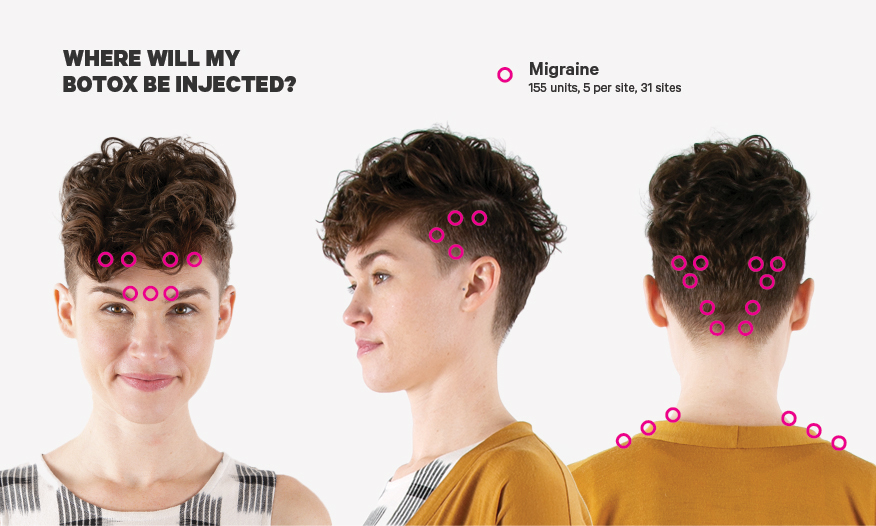First things first, how do Botox injections for migraines work?
Clinical trials have shown that Botox can prevent an average of 8–9 headache days and migraine days or probable migraine days a month.
How it works EXACTLY is unclear. Initially, it was thought that Botox's ability to reduce muscle spasms might be the answer, but that theory has since been debunked. Some scientists now speculate the injections may block the release of certain neurotransmitters to nervous systems. But that hasn't been proven, so it's anybody's guess at this point. Although that may seem surprising, it shouldn't be, considering doctors still don't know the causes of some headaches.
You said this wasn't for all migraine-sufferers. Is it for me?
Right now, Botox is only approved for adults who experience chronic migraine. According to Botox’s manufacturer, chronic migraine is defined as 15 or more headache days a month, with at least 8 of those headaches being migraines lasting four hours or more. Researchers estimate this is about 3.3 million adults in the United States.
So where is Botox injected for migraine headaches?
The Botox for migraines injection sites include seven zones in the head, neck, and shoulders.
Exactly how many times will they stick me?
Let's not sugarcoat this: each session involves 31 total injections in the head, neck, and shoulders. But it's not as bad as it sounds. Botox's manufacturer, Allergan, recommends doctors use a very fine, 0.5-inch-long needle. That’s shorter than the length of a dime. And that needle is inserted into shallow muscles. Plus, the whole shebang takes about 15 minutes.












